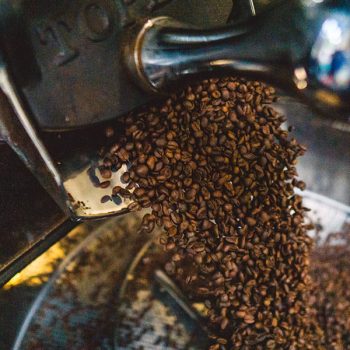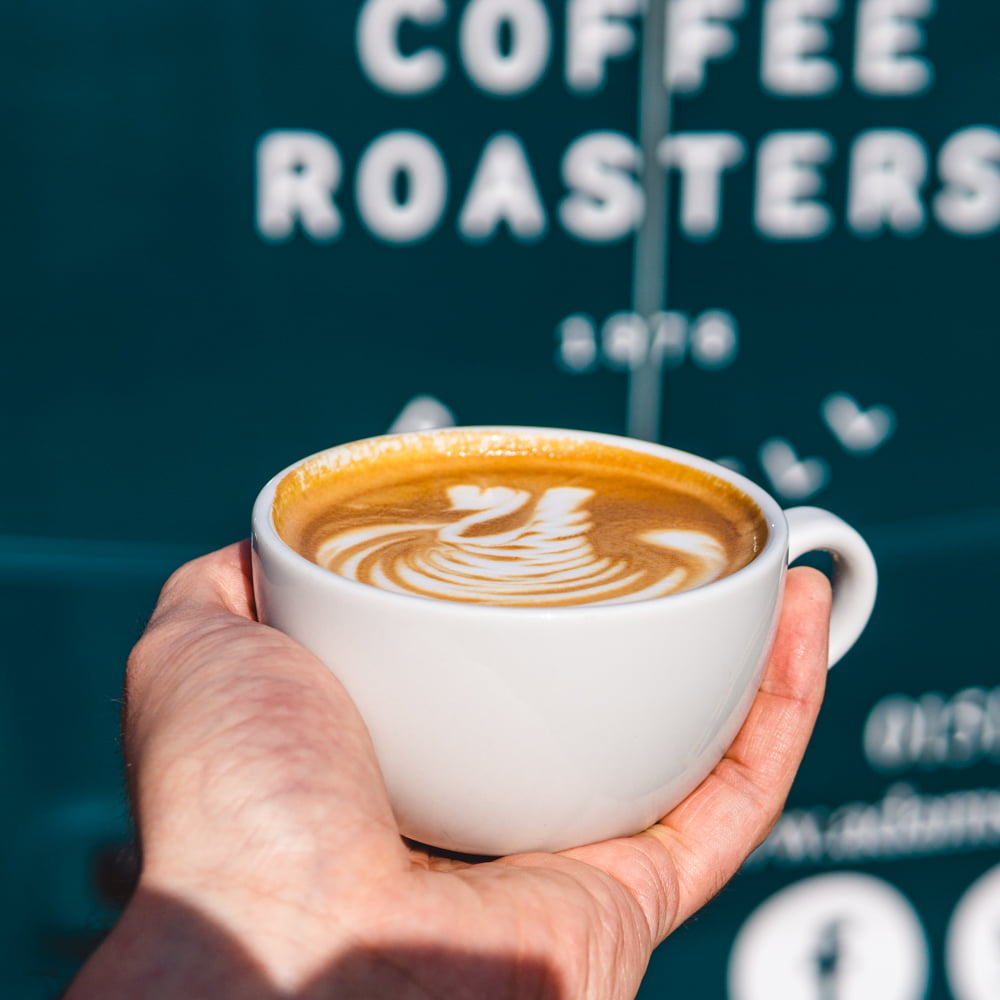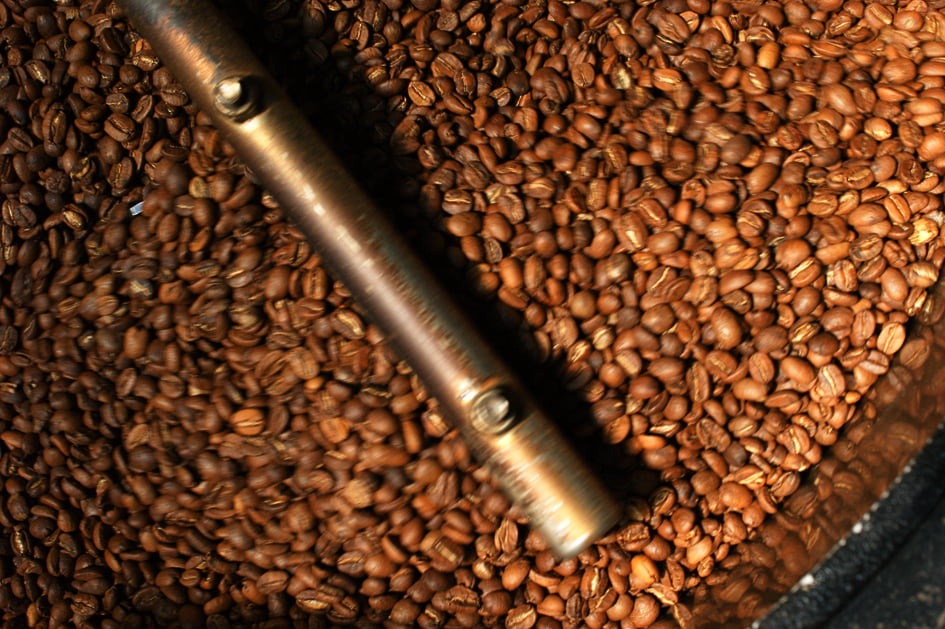
We’re giving you a one-time opportunity to step directly into our coffee roasting house. To not only read, but also see what happens to the coffee beans as they go through the much loved roasting process.
If you’re interested in drinking high quality, fresh coffee, you need to know as much as you can about your beans and how they are roasted.
Many of our locals tell us they are truly inspired when they enter the roasting house. And at our monthly brew school, we’re regularly told that learning the roasting process was the most enjoyable part of the day.
So get inspired and enthused as we explore more about how coffee beans are roasted.
The subject of coffee roasting is huge.
Why?
Because as well as there being an art to achieving the perfect roast, there’s also a science to achieving the perfect taste.
And it takes years to master.
So today we’re giving you the details of how coffee beans are roasted to ensure or beans are perfect.
So How are coffee beans roasted?
Step 1: The beans are placed in the roaster in small batches
The beans are placed in the roaster in small batches at a temperature above 400F (200C), so the shape and size can be thoroughly checked.
By ensuring beans are of the same size and shape it is easy to gain an even roast.
Step 2: The case of the beans are hardened using flames
Direct flame roasting is a traditional method that’s generally used by smaller coffee roasters (like Adams & Russell do every day). Direct flame roasting, hardens the casing of the beans.
It allows the roaster to achieve accurate high roasting levels without any ash or burnt flavours, whilst protecting the delicate flavours of the bean (which can be lost in conventional oven baked roasters).
Step 3: They are constantly rotated inside the machine
While flame roasting, the beans are rotated inside the drum to achieve a consistent roast right throughout the batch. Another benefit of roasting in small batches.
Step 4: The beans are checked every few seconds…
Yes every few seconds, by the experts until they see that they are the perfect colour, size, surface texture and smokiness depending on the type of roast that is being created.
Step 5: The beans travel to a cooling tray
When the desired result is achieved, the beans immediately travel to a cooling tray to stop the roasting process.
Step 6: The gasses are released
After roasting, the coffee beans release natural gases. Accordingly, when they are packed in smaller bags, they are packed in a valve bag to allow the release of gasses, but which allows no air to come in.
Step 7: Protect and preserve
The technology of the packaging is designed to protect and preserve the the essential flavours and aromas of the beans and is gentler than vacuum packing, which strips away essential aromas.
This is why your coffee beans are so fresh when they arrive at your door.

So there you have it. The 7 step process to a perfect coffee bean. But it doesn’t stop there, here’s what you need to do:
Find the details of your coffee supplier and have a browse of their website to see if you can find any details on their roasting process. Get a really good idea of how fresh your coffee really is!
If you can’t find any info on their roasting process, just give them a shout; drop them an email or give them a call. From our experience customers, are always dealt with in the utmost respect.
Here’s the upshot:
Don’t be stuck with mediocre coffee that you’re paying a premium price for.
The fact you’ve come this far means you are interested in the process and you want to improve your coffee drinking. Now you have the knowledge to do so.
Coffee Roasting at Adams + Russell
The article couldn’t be finished without offering you more information on our roasting process.
So, if you’re interested, simply give our experts a call to find out how we can help you.
As you can see, we really care about the process of roasting coffee beans and are very protective over the traditional methods.
Why? Because it’s the ONLY way to achieve ultimate perfection to your morning cup of coffee.


